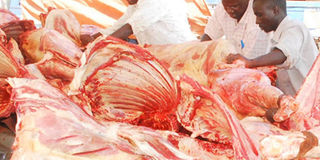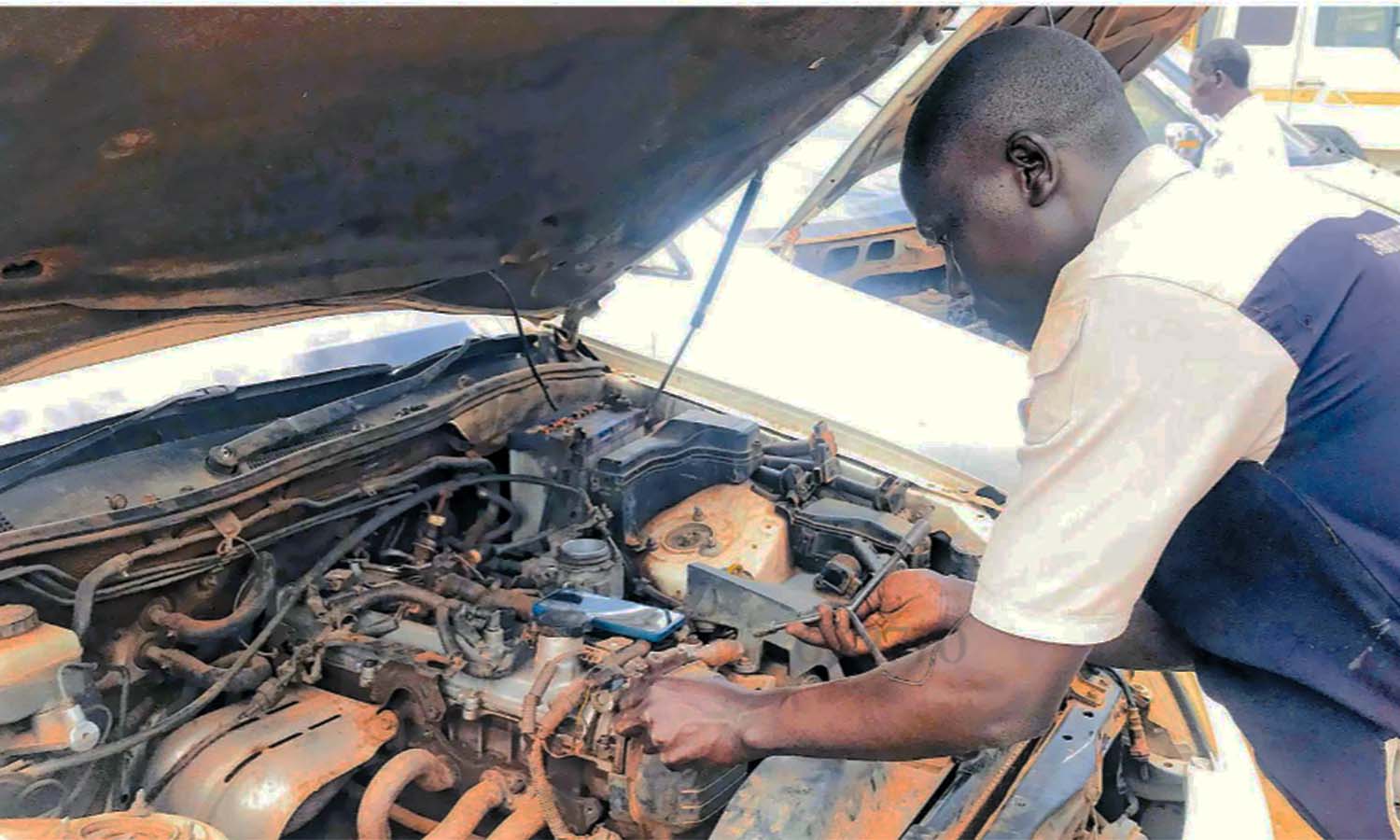Prime
Uganda’s meat industry promising despite the filth

Men slaughter meat at one of the abattoirs in Kampala. Meat traders are decrying the iregularities in the industry. PHOTO by stephen wandera
Kampala
There is no abattoir in Uganda which is internationally approved for exports, explaining why the meat sector remains a paltry contributor to the national coffers despite a readily available market overseas.
About 80 per cent of all towns in the cattle corridor have slaughter slabs that serve as places of slaughter for the supply of meat to town residents. While in the city centre, where there should be at least one modern abattoir, all you find is what many describe as “some sort of upgraded slab”.
Most of these slabs; including the City Abattoir, have no facilities for slaughtering animals off ground, or other basic facilities. The drainage system is poor or non-existent and there are no essential facilities such as water supply, proper toilets or professionally functioning office. Most of these slaughter houses (slabs) are in dire need of rehabilitation.
Filth and absolute torture of animals greeted us at one of the recent visits to the national abattoir rendering me a vegetarian from that day on. The animals that were due for slaughter were being dragged on the floor and beaten with huge sticks. Some would be dragged around only to be heavily forced onto the ground, fracturing body parts in the process.
Once at the abattoir, the animals are not fed as they await their day of slaughter. The transportation of animals from the farms to the abattoirs leaves a lot to be desired.
Business Power has since established that this is the way things are done in most of the slabs and abattoirs across the country. “Animals are poorly transported and meat is distributed in unhygienic conditions,” Dr David Kamukama, the vice chairman of Uganda Beef Producers Association, told Business Power in a recent interview.
This partly explains why the meat sector cannot venture into the foreign markets despite the sector’s huge potential to attract foreign exchange for the country.
“We can’t export meat especially to European Union countries and the United States because we don’t conform to any meat quality standards. Our meat is not of good health standards because we don’t have an export abattoir,” he noted. “We are simply wasting time and resources. We can continue zigzagging but until we have an abattoir that suits international standards, we can’t achieve much,” he added.
The Uganda Bureau of Statistics 2008 livestock census report indicates that the country has a stock of about 11.4 million heads of cattle, 12.5 million goats, 3.4 million sheep, 3.2 million pigs and 37.4 million birds.
The country produces 142,000 metric tonnes of meat, with beef contributing 107,000, goat meat 28,000 metric tonnes and sheep 5,000 tonnes and the sector contributes about 17 per cent of Uganda’s GDP, though it could do better if the market is structured. Before importing any meat, importing countries first certify where animals are coming from and where and how they are slaughtered to ascertain whether they conform to their meat quality and health standards.
The country has only three large meat processing firms including: Uganda Meat Packers, Quality Cuts and Rose Butchery. Notwithstanding the above challenges, livestock production has continued to grow at a rate of over 4 per cent per annum, in response to increasing demand for milk and meat in the local market. Higher rates of growth are envisaged as the government pursues its policies of modernising and commercialising agriculture. Following government’s policies of privatisation and liberalisation, the meat sector and related projects were put in the hands of the private sector, which is now mandated to build modern facilities for the sector.
Dr Kamukama, however, argued that constructing modern facilities requires huge capital investments necessitating government intervention. Lack of modern abattoirs compromises quality standard enforcement. “The government has failed to enforce standards in the meat sector that’s why people are inhumanly slaughtering animals and transporting meat in unhygienic conditions using any mode of transport readily available,” he noted. “A government that does not protect the health of its people is not a serious one. The health of people is derived from eating quality products and eating unhygienic meat is deadlier than any epidemics in this country.”
Mr Moses Ssebunya, the Uganda National Bureau of Standards public relations officer, said the Ministry of Agriculture and UNBS jointly formulated animal slaughtering and meat handling and transportation standards and that it was up to the ministry to enforce them. “The Ministry of Agriculture veterinary department is supposed to inspect and ascertain whether meat is safe for human consumption but not UNBS,” he explained.
However, Dr Benon Kyokwijuka, the veterinary principal officer in charge of public health at the ministry of agriculture said their enforcement ability is constrained by understaffing and decentralisation of power. “Ugandans want to be followed everywhere in order to do things the way they are supposed to be done. That’s why Ugandans can’t put on seat belts before seeing police officers,” he said.
“That’s exactly what is happening in the meat sector, dealers want to first see enforcers before they do things right yet we don’t have enough staff.” He further noted that consumers have also not helped them to enforce safety standards yet they interact with meat dealers very often. “Ensuring meat safety is not only government’s work. Other stakeholders including consumers should partner with us by reporting those in wrong. “Imagine a consumer goes to buy meat and a dealer first chases away flies before selling him the meat and he still buys it. Enforcement becomes difficult if consumers are not willing to partner with us in this effort.”
Uganda’s meat sector is further constrained by low income levels of most Ugandans that inhibit people from eating meat. The national per capita meat consumption in Uganda is estimated at 6kg, compared to between 50kg to 60kg per capita in other developed countries.
It is also far below the 50kg recommended by the Food and Agriculture Organisation and World Health Organisation.
Uganda’s livestock sector is also faced with poor breeds, poor quality control systems, weak animal health management systems and lack of gazetted disease-free zones.
While cattle is expected to have attained optimum weight of 450kg at a slaughter age of between 18 and 24 months, cattle in Uganda don’t attain that weight due to poor genetics that don’t easily respond to feeding. However, last year, a Norway-based firm, Notura, initiated a project that seeks to improve the livestock industry in Uganda to produce quality meat acceptable in the European Union market. The project will train farmers in how to raise enough volumes and sensitise them on how to create disease free zones to enable the country export meat to the EU market by 2016.




